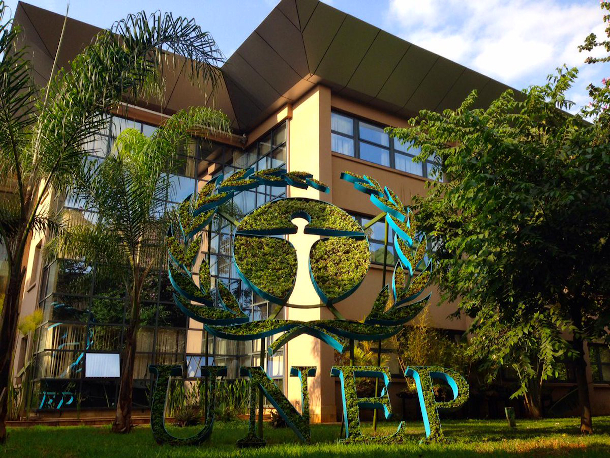
Rapid urbanisation worldwide means every five days, the world adds buildings equivalent to the size of Paris, with the built environment sector already responsible for 37 per cent of global emissions.
A report published by the UN Environment Programme (UNEP) and the Yale Center for Ecosystems + Architecture (Yale CEA), under the Global Alliance for Buildings and Construction (GlobalABC), offers solutions to decarbonize the buildings and construction sector and reduce the waste it generates.
The report, Building Materials and the Climate: Constructing a New Future, offers policymakers, manufacturers, architects, developers, engineers, builders and recyclers a three-pronged solution to reduce “embodied carbon” emissions and the negative impacts on natural ecosystems from the production and deployment of building materials (e.g., cement, steel, aluminium, timber, biomass):
- Avoid waste through a circular approach: building less by repurposing existing buildings is the most valuable option, generating 50-75 per cent fewer emissions than new construction; promote construction with fewer materials and with materials that have a lower carbon footprint and facilitate reuse or recycling.
- Shift to ethically and sustainably sourced renewable bio-based building materials, including timber, bamboo, and biomass. The shift towards properly managed bio-based materials could lead to compounded emissions savings in many regions of up to 40 per cent in the sector by 2050. However, more policy and financial support is needed to ensure the widespread adoption of renewable bio-based building materials.
- Improve the decarbonisation of conventional materials that cannot be replaced. This mainly concerns the processing of concrete, steel, and aluminium – three sectors responsible for 23 per cent of overall global emissions today – as well as glass and bricks. Priorities should be placed on electrifying production with renewable energy sources, increasing the use of reused and recycled materials, and scaling innovative technologies. Transformation of regional markets and building cultures is critical through building codes, certification, labelling, and the education of architects, engineers, and builders on circular practices.
The three-pronged Avoid-Shift-Improve solution needs to be adopted throughout the building process to ensure emissions are slashed and human health and biodiverse ecosystems are protected. The solution also requires, in its implementation, sensitivity to local cultures and climates, including the common perception of concrete and steel as modern materials of choice.
“Until recently, most buildings were constructed using locally sourced earth, stone, timber, and bamboo. Yet modern materials such as concrete and steel often give only the illusion of durability, usually ending up in landfills and contributing to the growing climate crisis,” said Sheila Aggarwal-Khan, Director of UNEP’s Industry and Economy Division.
“Net zero in the building and construction sector is achievable by 2050, as long as governments put in place the right policy, incentives and regulation to bring a shift the industry action,” she added.
To date, most climate action in the building sector has been dedicated to effectively reducing “operational carbon” emissions, which encompass heating, cooling, and lighting. Thanks to the growing worldwide decarbonisation of the electrical grid and the use of renewable energies, these are set to decrease from 75 per cent to 50 per cent of the sector in coming decades.
Since buildings contain materials produced in disparate regions across the globe, reducing “embodied carbon” emissions from the production and deployment of building materials requires decision makers to adopt a whole life-cycle approach. This involves harmonized measures across multiple sectors and at each stage of the building lifecycle – from extraction to processing, installation, use, and demolition.
Government regulation and enforcement is also required across all phases of the building life cycle – from extraction through end-of-use – to ensure transparency in labelling, effective international building codes, and certification schemes. Investments in research and development of nascent technologies, as well as training of stakeholders in the sectors, are needed, along with incentives for cooperative ownership models between producers, builders, owners, and occupants to shift to circular economies.
“The decarbonisation of the buildings and construction sector is essential for the achievement of the goal of limiting global warming to 1.5°C. By providing cutting-edge scientific insights as well as very practical recommendations to reduce embodied carbon, the study ”Building materials and the climate: Constructing a new future” advances our joint mission to decarbonise the sector holistically and increase its resilience”, said Dr. Vera Rodenhoff, Deputy Director General for International Climate Action and International Energy Transition of the German Federal Ministry for Economic Affairs and Climate Action (BMWK), which together with the German Federal Ministry for Economic Cooperation and Development (BMZ) has funded the study.
Case studies from Canada, Finland, Ghana, Guatemala, India, Peru, and Senegal, demonstrate how decarbonisation takes place using “Avoid-Shift-Improve” strategies: developed economies can devote resources to renovating existing ageing buildings, while emerging ones can leapfrog carbon-intensive building methods to alternative low-carbon building materials.
Cities worldwide can drive the implementation of decarbonisation. Many are already integrating vegetated surfaces, including green roofs, façades, and indoor wall assemblies to reduce urban carbon emissions and cool off buildings, increase urban biodiversity and more.
UNEP is the leading global voice on the environment. It provides leadership and encourages partnership in caring for the environment by inspiring, informing and enabling nations and peoples to improve their quality of life without compromising that of future generations.
Founded at COP21, hosted by UNEP and with 289 members, including 40 countries, the GlobalABC is the leading global platform for all buildings stakeholders committed to a common vision: A zero-emission, efficient and resilient buildings and construction sector.
Yale CEA unites researchers and practitioners across multiple fields, synthesising innovations in science, art and humanities towards ecosystems that prioritise the requirements of living organisms and ecologies. Our mission is to transform the DNA of the Built Environment, which is currently the sector responsible for the largest real-time climate change impacts and the consumption/production of toxic, non-renewable resources.








